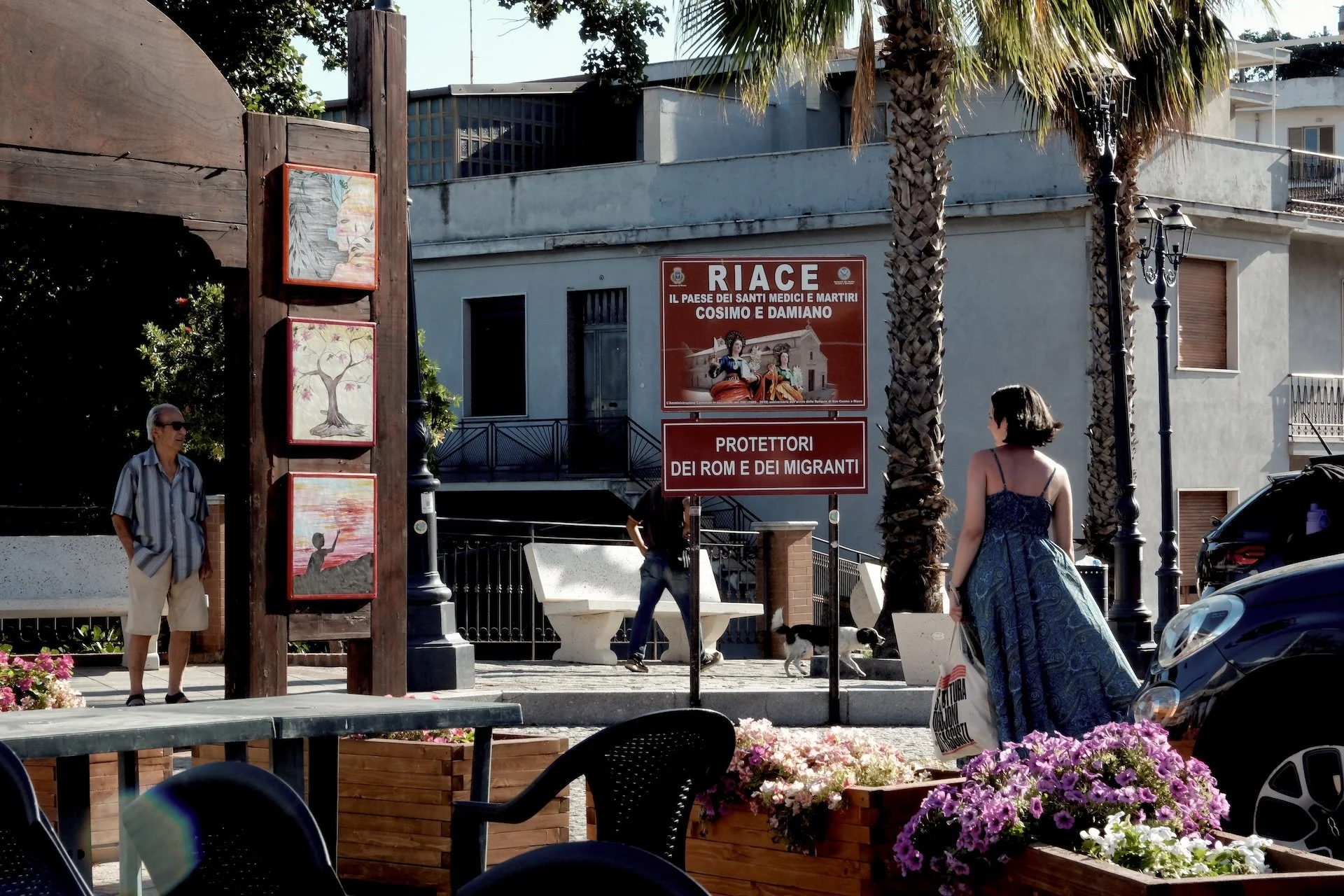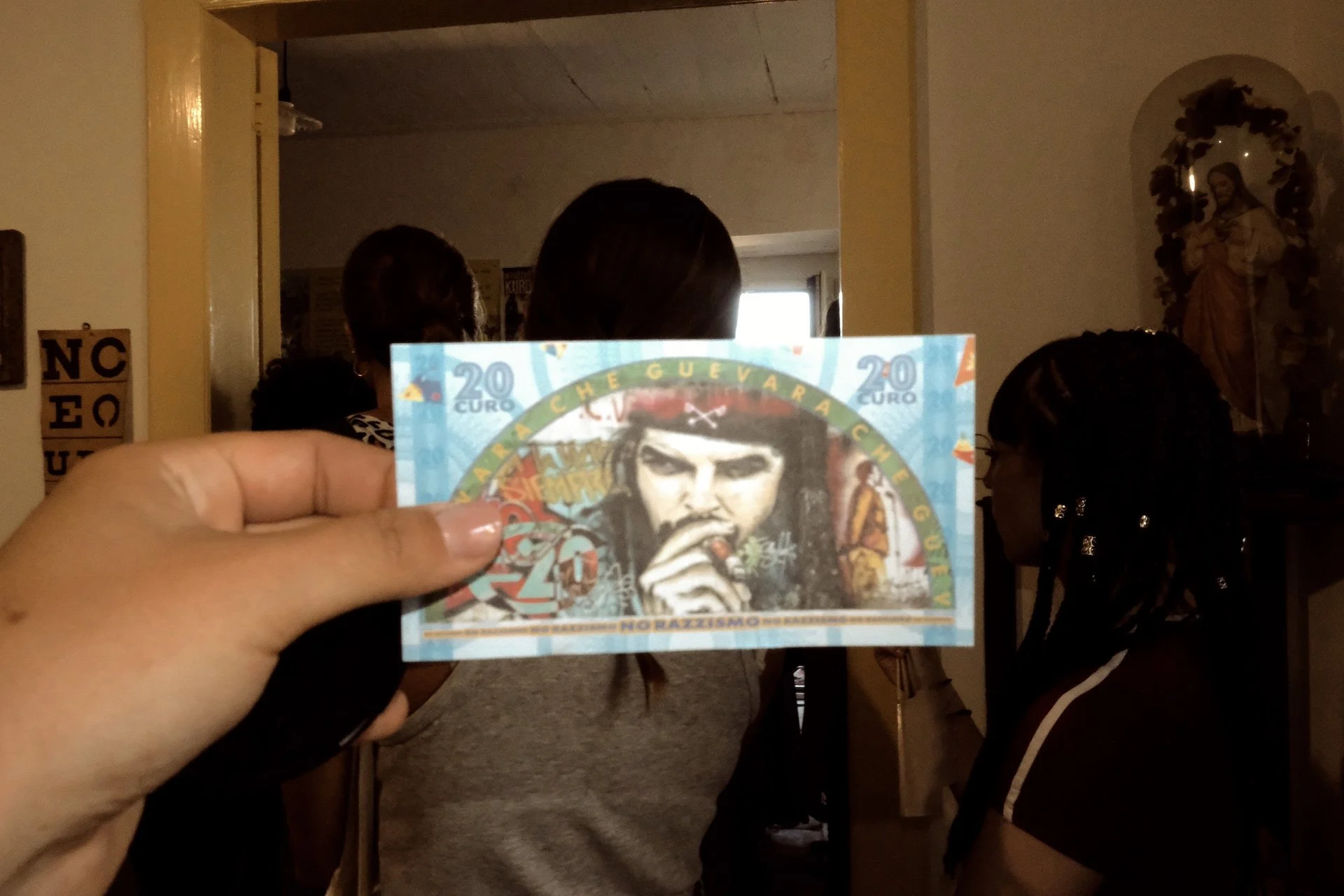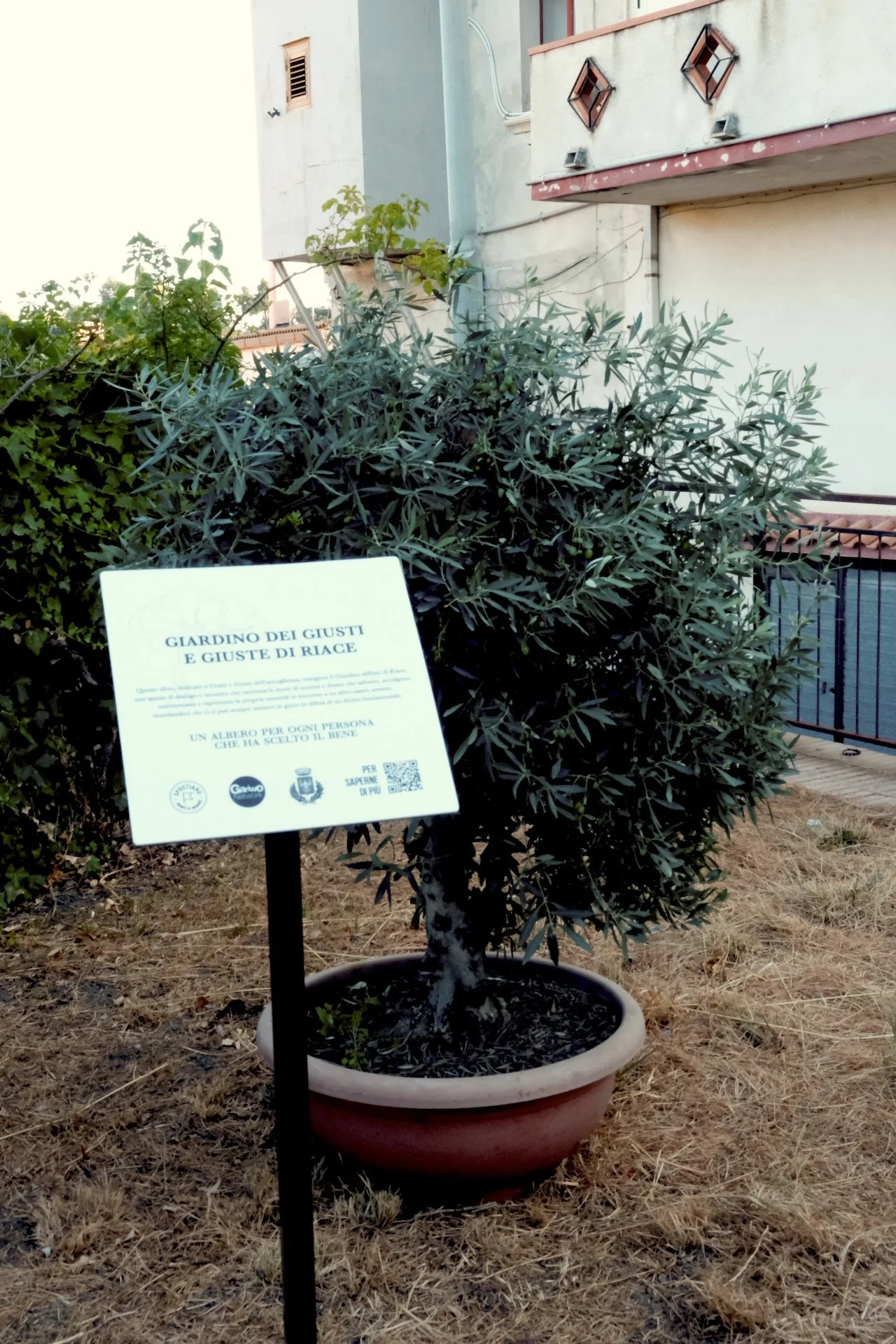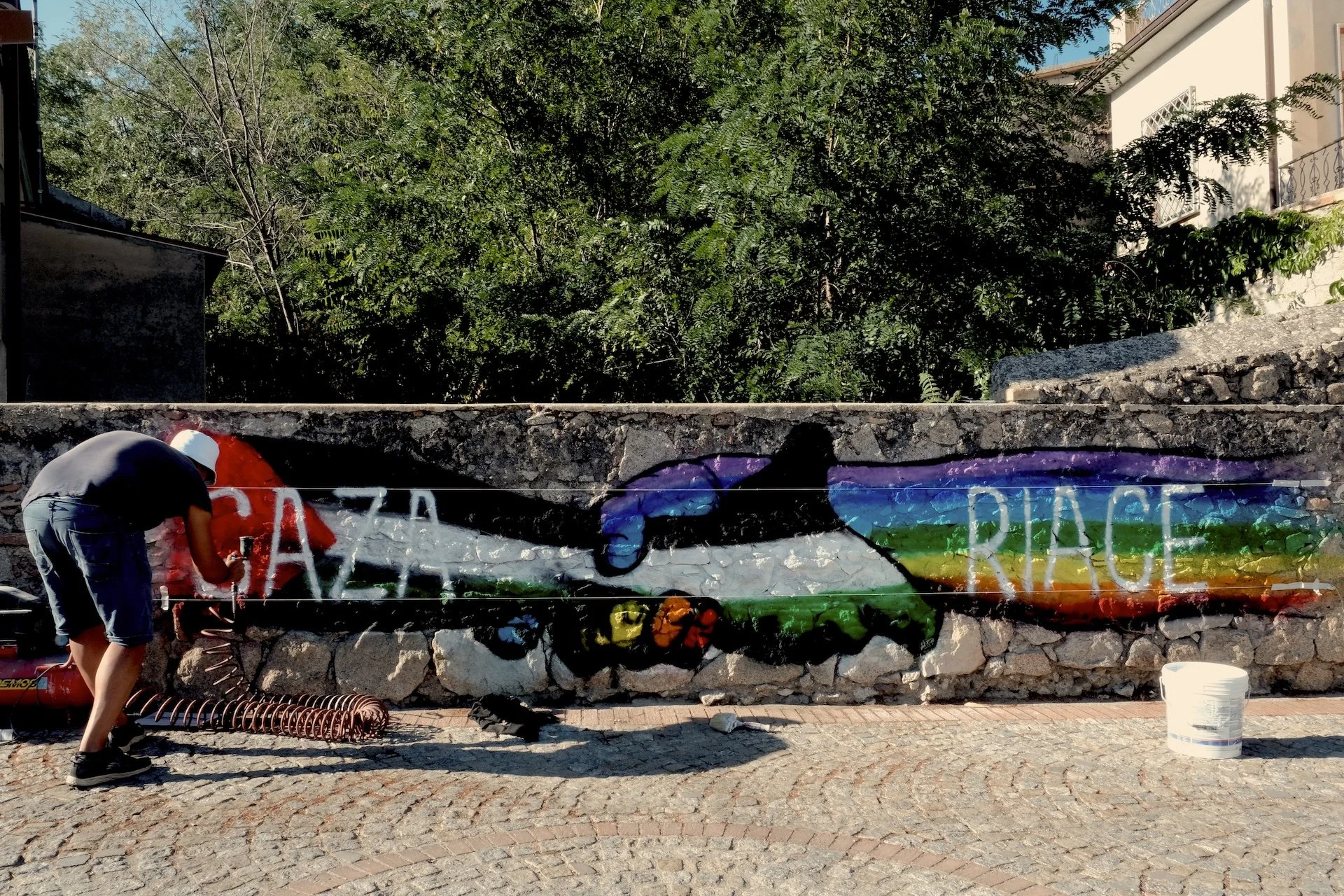Riace: the Model that Challenged the Italian Integration System
Italy's immigration system has long struggled to develop a coherent and effective model of integration, especially at the regional level. The lack of an organic legislative framework and cohesive regional organization has often led to fragmented and ineffective policies. Nowhere is this more evident than in Calabria, a region burdened by chronic economic stagnation, systemic depopulation, corruption, and institutional inefficiency. Yet amid this troubled landscape, the small town of Riace carved out a unique path that not only transformed its own socio-economic reality but also became a beacon for alternative integration models worldwide.
“Riace, the town of the saints San Cosimo and Damiano, protectors of Rom people and migrants” (Photo: Carmen Critelli)
The "Riace Model", as it came to be known, emerged as a counter-narrative to both Italy's national immigration policies and the socio-economic decline of Calabria. Central to this story is Domenico Lucano, a former schoolteacher who, propelled by a moment of spontaneous solidarity in 1997, helped create one of the most innovative refugee integration projects in Europe.
In recent years, as Italy has been the site of rising right-wing movements, the “Riace Model” has been subjected to a fierce political backlash. Yet, despite mounting opposition, it continues to be upheld by many as a symbol of inclusive migration policies, fostering international solidarity and inspiring similar initiatives beyond Italy’s borders. Its resilience lies not only in the practical benefits it has brought to local communities but also in the powerful counter-narrative it offers to exclusionary political rhetoric.
The origins of the Riace model
In 1997, a boat carrying Kurdish refugees fleeing war and persecution landed on the shores near Riace. The arrival of these asylum seekers could have been just another episode in Italy’s broader migrant crisis. Instead, it became a catalyst for change. Inspired by this encounter, Lucano, then an ordinary citizen, helped create the "Città Futura Puglisi" Association, laying the groundwork for a revolutionary integration strategy.
Riace, like many towns in southern Italy, was suffering from population decline, economic decay, and abandonment of public infrastructure. Rather than viewing refugees as a burden, Lucano saw them as a resource, a kind of human and economic capital that could breathe life back into a dying town. Abandoned homes were restored and given to refugee families; defunct businesses were reopened; local crafts were revived; and a community that had once been hollowed out was revitalized.
This initiative transformed Riace into what became known as the "Global Village", a rare experiment in grassroots-led, solidarity-based immigration policy.
Institutional support and evolution
In 2001, Riace joined the Piano Nazionale Asilo (PNA), Italy’s national asylum program. After its transformation into SPRAR (Sistema di Protezione per Richiedenti Asilo e Rifugiati), the town began receiving public funds to expand its refugee reception initiatives. When Lucano was elected mayor in 2004, he institutionalized many aspects of the Riace model, focusing on integration, empowerment, and territorial regeneration.
Lucano introduced practical tools aimed at improving refugees’ daily lives while integrating them into the local economy. These included:
Bonus d’acquisto (local vouchers): A response to chronic delays in state disbursements, the Riace administration introduced a localized currency backed by future state payments. This "moneta locale" (local currency) enabled refugees to make purchases within the community, ensuring their economic participation and bypassing reliance on external financial institutions.
Borse lavoro (employment grants): In local artisan workshops, Italian residents and refugee workers collaborated. Refugees received monthly stipends of around €600, independent of workshop profits, which allowed them to acquire skills and contribute to the community without being trapped in a purely aid-dependent model.
Social Funds: These additional social funds helped ensure a basic level of dignity and financial security, with amounts adjusted based on family size. The model emphasized autonomy and self-worth, rather than dependency.
Local voucher created by Lucano representing Che Guevara instead of money. (Photo: Carmen Critelli)
Socio-economic transformation
Through these mechanisms, Riace witnessed the reopening of its school and nursery, the establishment of eco-tourism initiatives, and a notable rise in intercultural dialogue and solidarity. The arrival of refugees provided the demographic and economic stimulus needed to reverse decades of decline. Importantly, the project demonstrated that integration and territorial regeneration are not mutually exclusive but mutually reinforcing.
The role of refugees in this transformation was not passive. They became co-creators of the new Riace, restoring homes, working in workshops, and participating in community life. The vision extended beyond mere accommodation; it was about constructing a new, shared future.
The Riace model also gained international attention. In 2016, Fortune magazine named Domenico Lucano among the world’s 50 greatest leaders, recognizing the model's innovative approach and global relevance. Riace became a reference point for towns across Europe grappling with depopulation and migration.
Judicial repercussions and political backlash
However, not all narratives of transformation are without obstacles. In 2018, Lucano was arrested as part of Operation Xenia, a police investigation into alleged irregularities in the management of refugee funds. He faced charges including the alleged promotion of a criminal organization, misappropriation of public funds, and falsification of documents.
In 2021, the Tribunal of Locri sentenced Lucano to a severe prison term, alleging he had enabled €2.3 million in unjust financial gains through fraudulent reimbursements and bureaucratic manipulation. The case attracted significant attention both in Italy and abroad, splitting public opinion. Critics saw the charges as a politically motivated attack on a successful humanitarian initiative; supporters of the investigation viewed them as necessary enforcement of legal standards.
Lucano, now an MEP (Member of the European Parliament) with the Alleanza Verdi e Sinistra (AVS), has consistently denied the charges. In his words:
It was a theorem, studied and elaborated to obstruct a story of hospitality that was unique in the world… We did something that interfered with issues beyond Riace. I think of the timing of the agreements between Italy and Libya, there is a strong connection.
The Italy–Libya agreement, which Lucano mentions, committed Rome to training and equipping the Libyan Coast Guard, as well as co-financing projects with the European Union aimed at improving conditions in Libya’s migrant detention centres.
In this light, the story of Riace also mirrors the broader ideological and political fault lines shaping Italy’s migration debate: humanitarianism versus security, solidarity versus legality, and grassroots experimentation versus centralized control.
Domenico Lucano with Judge Emilio Sirianni at the entrance of the Global Village in Riace. (Photo: Carmen Critelli)
Riace today
Although the original structure of the “Global Village” in Riace no longer operates at its former scale, the town remains a living symbol of solidarity, integration, and civic resistance. Many of the spaces and values that shaped Riace’s revival are still alive, thanks to the ongoing commitment of grassroots associations that continue to engage with the town and carry forward its legacy.
One such organization is the Spostiamo Mari e Monti association. The group works throughout the year to build communities rooted in solidarity and participation, aiming to cultivate critical, independent thinking, often through free civic education programs offered in public schools, which have involved thousands of students over the years.
The association traces its founding to the first Riace Camp, a project designed to educate young people on peace, solidarity, and human rights. Each summer, the camp creates a temporary community where participants engage with themes such as migrant integration, environmental justice, and labor rights. The sixth edition, held from July 27 to August 6, 2025, included a variety of activities, including the planting of an olive tree symbolizing peace, resilience, and connection to the land.
The camp targets young people aged 18–25, offering them a formative experience based on peer-to-peer education, with the goal of shaping conscious, engaged, and compassionate citizens. A key aim of the project is also to ensure access for youth from economically or socially disadvantaged backgrounds, who are often at risk of exclusion. Over the years, more than 250 participants have taken part in the camp, thanks to public and private contributions that have made this opportunity widely accessible.
The association Spostiamo Mari e Monti after planting the olive tree. (Photo: Carmen Critelli)
The olive tree was dedicated to the “Righteous of Hospitality,” individuals who have acted with courage, dignity, and compassion in welcoming others. This symbolic act honored those who have stood up for human rights, often against great odds, and aimed to root those values deeply in the soil of Riace itself. The event was attended by prominent figures such as human rights activist Patrick Zaki and Judge Emilio Sirianni, whose presence underscored the broader political and ethical importance of the initiative. In the shade of the newly planted tree, participants reflected on the enduring power of everyday acts of justice and hospitality, reminders that true change often begins with small, rooted gestures that grow into lasting legacies.
Thanks to these initiatives, participants not only learn, but also experience firsthand the legacy of the Global Village of Riace, walking the same streets that were transformed by Mimmo Lucano’s vision. One of the most symbolic moments of the camp is the reactivation of the “Forno dei Popoli” (Oven of the Peoples), a community oven first inaugurated in 2021, and brought back to life each year as a space for sharing and togetherness. This year, the moment was made even more special with the unveiling of a mural by the artist Laika, further enriching the square with messages of peace and solidarity. As bread is kneaded and baked together in the open air, the oven becomes a powerful metaphor for community building, an ancient, simple act that still carries deep meaning.
In this way, Riace remains not just a place of memory, but a place of action, a living laboratory of hope, where solidarity continues to take root in the everyday life of a small Calabrian village with a global heart.
This spirit of solidarity took on new meaning on August 5, 2025, when Riace signed a twinning agreement with the Gaza Strip, a powerful gesture uniting two communities shaped by suffering but driven by a shared desire for dignity and peace.
The agreement was signed by Mimmo Lucano, alongside a Palestinian woman who survived the war and arrived in Italy with her newborn daughter for medical care. Her story—marked by the birth of her child on the same day her eldest son was killed in a bombing—became a symbol of both immense pain and enduring hope.
A mural commemorating the twinning of the two cities. (Photo:Carmen Critelli)
“This is an act of resistance against indifference,” said Lucano during the ceremony, which was also broadcast in Gaza.
In the shade of the newly planted olive tree from the Riace Camp, the message was clear: solidarity knows no borders, and even the smallest village can carry a global heart.





